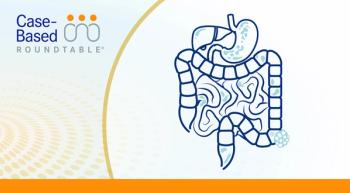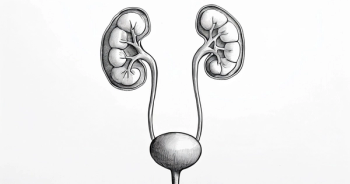
Pembrolizumab/XL888 Combination Shows Safety and Feasibility in Advanced CRC
Key Takeaways
- Pembrolizumab and XL888 showed a manageable safety profile in advanced colorectal cancer patients, with no new toxicity signals observed.
- Limited clinical responses were noted, but potential immunomodulatory effects suggest further investigation is warranted.
Pembrolizumab and XL888 in advanced CRC showed manageable safety, though limited responses and potential immunomodulatory warrant further investigation.
The novel combination of pembrolizumab (Keytruda) and XL888, a small molecule Hsp90 inhibitor, showed a manageable safety profile with no new toxicity signals in heavily pretreated patients with advanced colorectal cancer (CRC), according to findings from a phase 1b/2 trial (NCT03095781). Although the regimen yielded limited clinical responses, researchers identified potential immunomodulatory effects that warrant further investigation.
Patients with stage IV advanced gastrointestinal malignancies, including CRC, were screened for enrollment in the trial. In the dose-escalation portion of the study, which used a standard 3 + 3 design, 14 patients received pembrolizumab plus LX888 in 45 mg, 60 mg, and 90 mg doses. In this cohort, 6 patients were diagnosed with CRC, 2 had pancreatic ductal adenocarcinoma, and 1 each had biliary tract, ampullary, and duodenal cancer. Seven patients had received 3 or more prior therapies.
Once the recommended phase 2 dose was established, the dose-expansion portion assessed pembrolizumab alone (n = 7) or with XL888 (n = 9) in patients with CRC. Biomarker samples were collected to evaluate safety and immune response.
The primary end point of the study was safety and toxicity of the combination of the defined recommended phase 2 dose. The secondary end points were progression-free survival (PFS), duration of response (DOR), and objective response rate (ORR).
The median age for patients in the dose-escalation portion of the study was 66.5 years (range, 59-71), and the majority of patients were male (64%). Median PFS for patients in the dose escalation phase was 2.1 months (95% CI, 2-3 months and median overall survival (OS) was 6 months (95% CI, 2.3 to 9.5 months).
The most common treatment-related toxicities were grade 2, and included autoimmune hepatitis (n = 1), retinopathy (n = 2), nausea (n = 1), constipation (n = 1), and diarrhea (n = 6).
The median age in the expansion cohort was 56.5 years (range, 50-63), most patients had left-sided tumors (68%) and were female (56%). In this cohort, 12 patients had a tumor with RAS mutation, 1 with a BRAF mutation, and 14 were refractory mismatch repair proficient (pMMR).
Overall, median PFS was 1.9 months (95% CI, 1.3-2) and median OS was 5.5 months (95% CI, 3-9.9). Investigators reported that a total of 6 patients with pMMR CRC had stable disease with 2 in the escalation cohort and 4 in the expansion cohort.
Reviewing the immunomodulatory effects, investigators noted fewer IL6+ cells in CRC tumors in patients who received the combination regimen compared with more overall IL6+ cells in tumors of those treated with pembrolizumab monotherapy. Further, they observed a trend of fewer CD19+ cells in biopsies from patients receiving pembrolizumab and XL888. These effects were consistent with previous preclinical findings evaluating XL888 and its effect on IL-6 production.
Immunomodulatory effects were determined using several complementary methodologies, including multiplex immunohistochemistry, mass cytometry, and plasma cytokine profiling.
The safety analysis revealed that 12.5% of patients had grade 3 to 4 adverse events (AEs) and serious AEs. These included myocarditis (n = 1), periorbital edema (n = 1), retinopathy (n = 1), diarrhea (n = 1), nausea/vomiting (n = 1), and increased alanine aminotransferase and aspartate aminotransferase levels (n = 1).
The most common any-grade AEs were diarrhea (46.7%), fatigue (40%), abdominal pain (20%), constipation, nausea, vomiting, and others observed in 16.7% each. Investigators reported no grade 5 AEs.
The investigators recognized a number of limitations that could affect the results. First, they noted the limited number of T cells available for analysis in the samples. This could likely constrain the efficacy of the combination. They also acknowledged that the heterogeneity of tumors and the use of core needle biopsies may not characterize the tumor microenvironment, leading to a skewed understanding of immune interactions within the tumors.
“Despite limited efficacy beyond stable disease in patients receiving pembrolizumab and XL888, our findings suggest avenues for further investigation,” the investigators wrote in the published study. “Findings from the study could lay the groundwork for future studies to build upon,” they concluded.








































